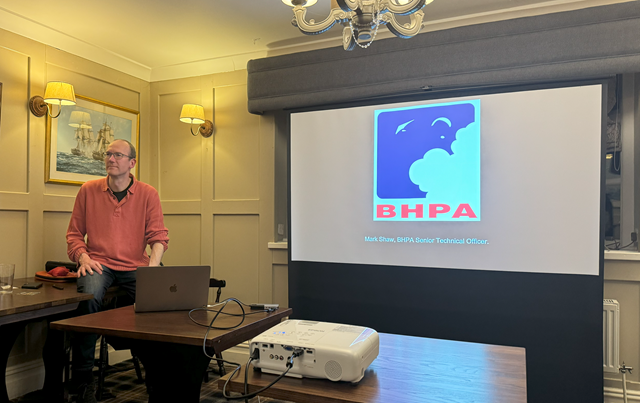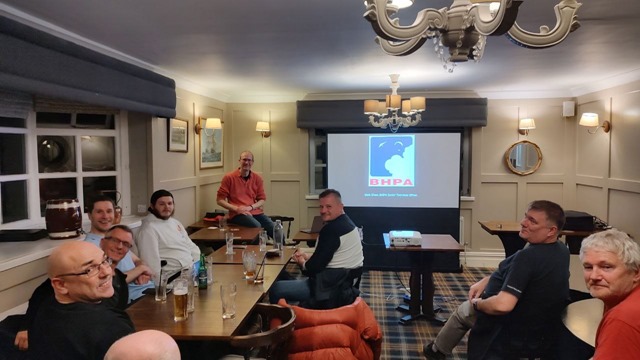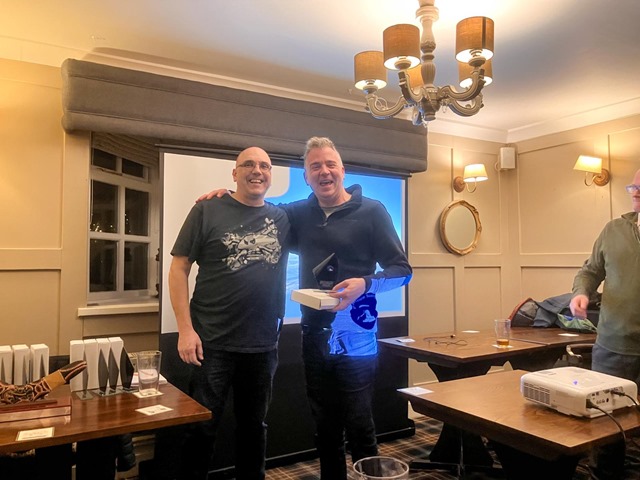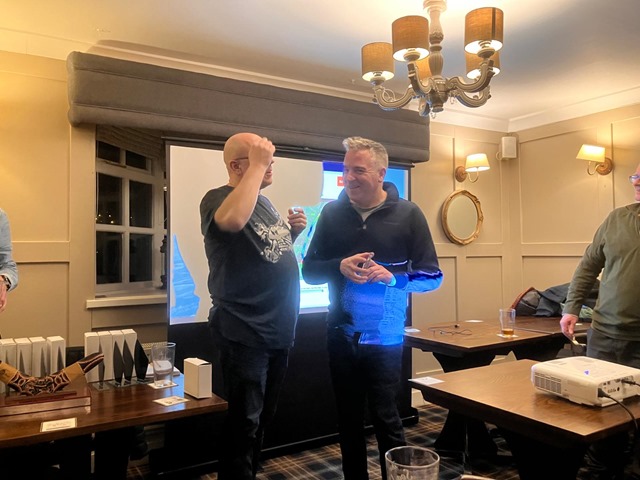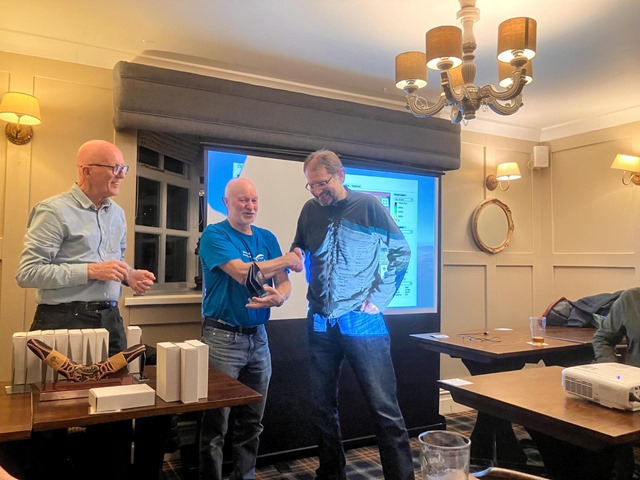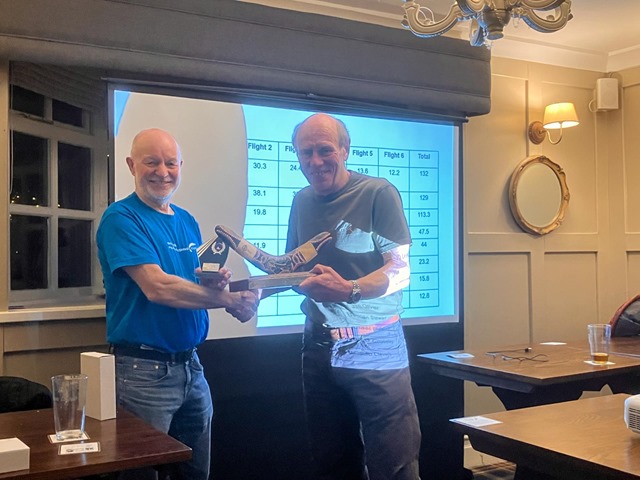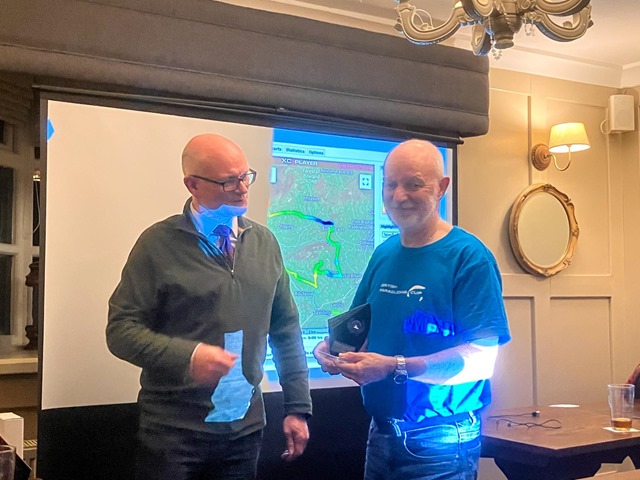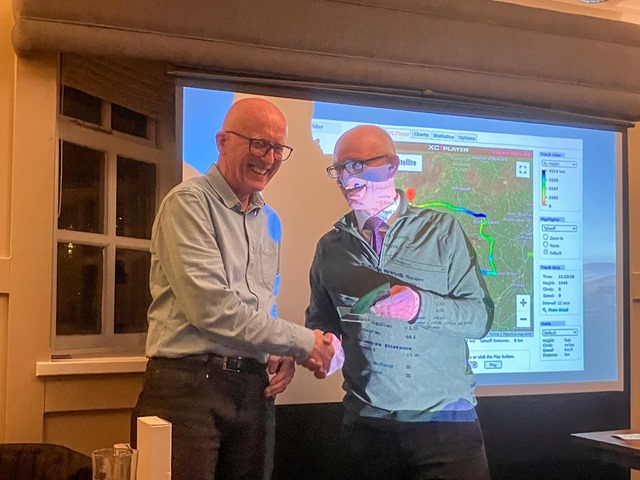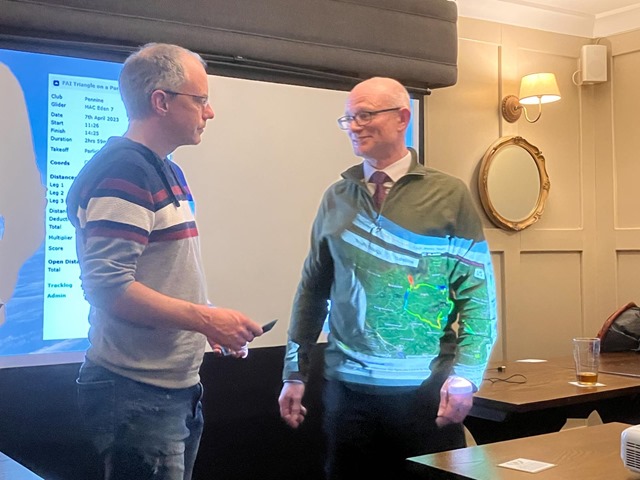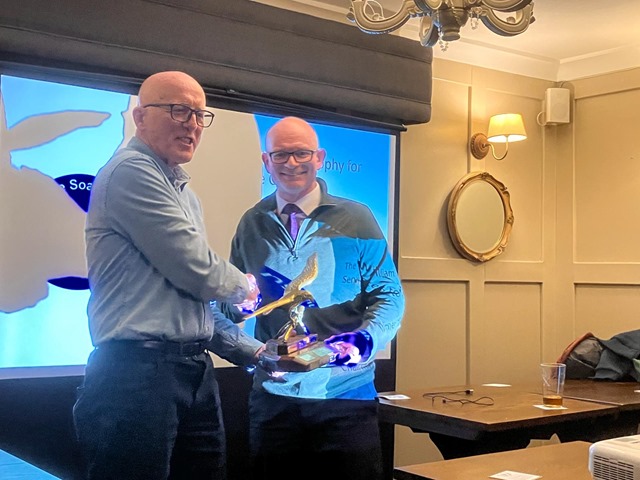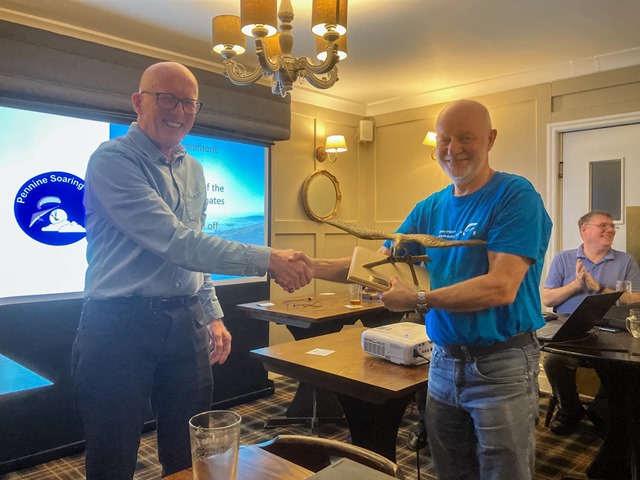FLARM issues
By Brian Stewart on March 20, 2024 10:38
Club Night - BHPA. Mark Shaw technical officer
By Graham Jones on March 12, 2024 11:16
A 3 hour evening of explanations of what the BHPA are actively progressing to keep the future of paragliding safe, insurable, cost effective and accepted by other general aviation users.
An extremely interesting insight to the hard work and progressive BHPA well explained by Mark Shaw.
A good attendance by the PSC members who all would welcome a return visit by the BHPA.
Pennine Soaring Club Awards 2023
By Carl Fairhurst on February 14, 2024 14:55
The awards for the 2023 season were awarded at the well attended AGM. The winners are as follows:
Paraglider Pilot Improvement Award
Ed Knowles
and
Matt Baird
(not present)
First 25km XC Flight
Ed Knowles
33km flight from Parlick on 9th July 2023
First 50km XC Flight
Scott O’Neil
53.9km flight from Parlick on 9th July 2023
PSC League Overall
PSC League Sport
Best XC Flight from Pennine Site
Phil Wallbank
124km flight from Parlick on 16th June 2023
Loop League
Paul Winterbottom
Best Local Flight
PSC League Fun Class
John Murphy
29.84km FAI triangle on the 7th April 2023
Representing the Club – National
Elliot Brown
1st place in Buttermere Bash Lakeland Charity Open B comp. and 1st place in LCC B comp.
Representing the club – International
John Oliver
British sports, St-Jean-Montclar: 1st in Reynolds, 4th overall
https://airtribune.com/bst2023/results/task6176/comp/overall-winner
British champs: 1st in Reynolds, 3rd in Sports,16th Brit, 52th overall.
Most chuffed about been first sports on one of the task's and been in sight of the leaders.
https://airtribune.com/bpc2023/results/task6295/comp/overall
World Civl rank 1318, UK Civl rank 48
Retrieve Award
Brian Stewart
Retrieve from Tebay for Jim and John
Club Award
Neil Charles
Creating the Wind at Altitude app
Club Award
Paul Redman on behalf of MRT (not present)
For their assistance involving an incident at Parlick
Bent Upright
Andrew Clegg
For best tent landing!
William Marshall Trophy for Services to the Club
Simon Scott
For services as chairman
Special Lifetime Achievement Award
John Murphy
For 27 years dedicated service to the club committee
GASCo Safety Evening
By Andy Archer on February 12, 2024 12:22
GASCO Safety evening - Monday 19th Feb, 7:30 to 9:30 pm at the Sea View Inn.
This is a joint event with Bowland Forest Gliding Club and is a safety talk delivered by GASCOo (General Aviation Safety Council).
These are very informative, interactive and thought provoking events. This will be a tailored event covering topics across both our disciplines including Threat & Error Management, Loss of Control accidents, Electronic Conspicuity, Human Factors, we are also looking to have the opportunity to discuss the local issues, particularly the shared airspace around Parlick.
It is likely to be a packed room so turn up early!
